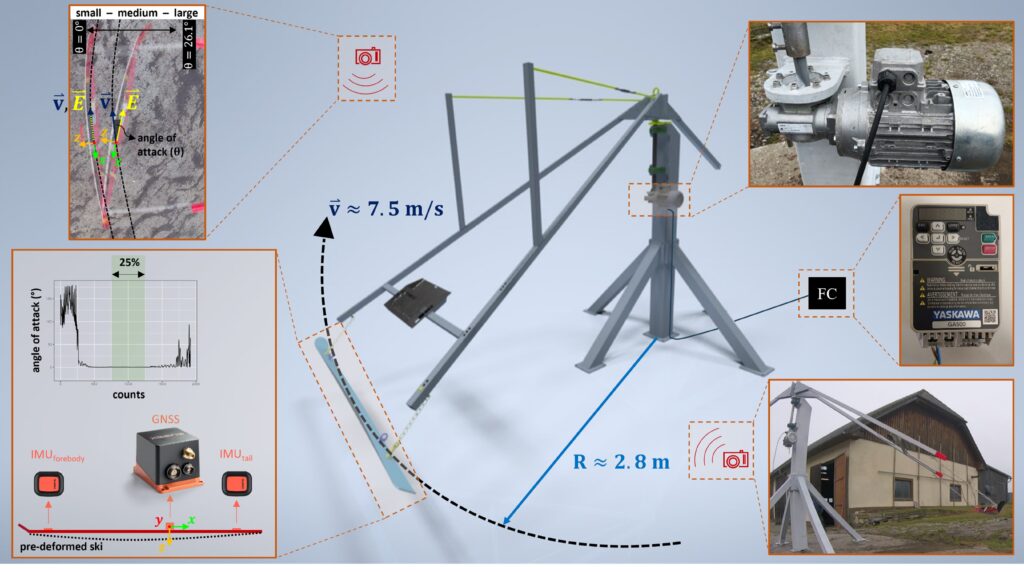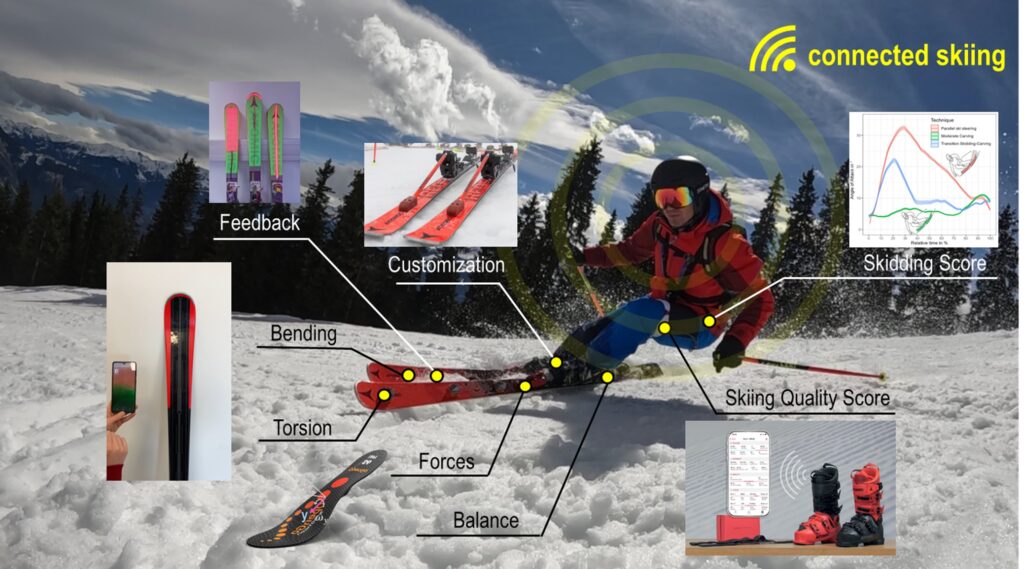A new measurement method for the angle of attack based on imu and GNSS data was developed, validated, and successfully applied on the slopes. Awarded 2nd place at the young investigator award (ICSS 2025).
What is the Angle of Attack and Why is it Critical?
The angle of attack is a fundamental biomechanical metric that describes how precisely a ski follows its intended path. It reflects the alignment between the ski’s direction and its movement – distinguishing clean carving from skidding. A smaller angle indicates better edge control and more efficient skiing. For the first time, this parameter enables objective, data-based evaluation of ski technique in real-world conditions.
Technological Approach: Sensor Fusion of IMU and RTK-GNSS
The system combines two sensor sources: an Inertial Measurement Unit (IMU) to capture the ski’s orientation, and a satellite-based RTK-GNSS (Real-Time Kinematic Global Navigation Satellite System) to calculate the velocity vector. Initially validated under controlled laboratory conditions using a specially designed centrifugal test apparatus (Figure 1), the sensor fusion method was then extensively field-tested on the slopes. The data collected allows for a detailed analysis of carving and skidding phases.

Research with Impact: Award-Winning Research for Practical Innovation
The research findings were presented at two international conferences—the International Society of Biomechanics in Sports (ISBS) and the prestigious International Congress on Science and Skiing (ICSS). The scientific innovation and practical relevance were particularly highlighted at ICSS 2025, where the work by Sebastian Schütz and Christoph Thorwartl was awarded 2nd place in the Young Investigator Award competition.
Applications and Future Potential
Together with industry partners Atomic and Wintersteiger, the project team is working to transform the angle of attack into a market-ready metric—for instance, for personalized product fitting and tailored ski service. Future measurements using an extended body sensor network and reference systems will serve to further validate the methodology (Figure 2). With its solid physical foundation, the angle of attack is emerging as a key metric for performance, safety and personalization in skiing.

Project coordination
Dr. Christoph Thorwartl, MEd
Researcher
Salzburg Research Forschungsgesellschaft mbH
T +43 (0) 662 2288 – 407
christoph.thorwartl@salzburgresearch.at
